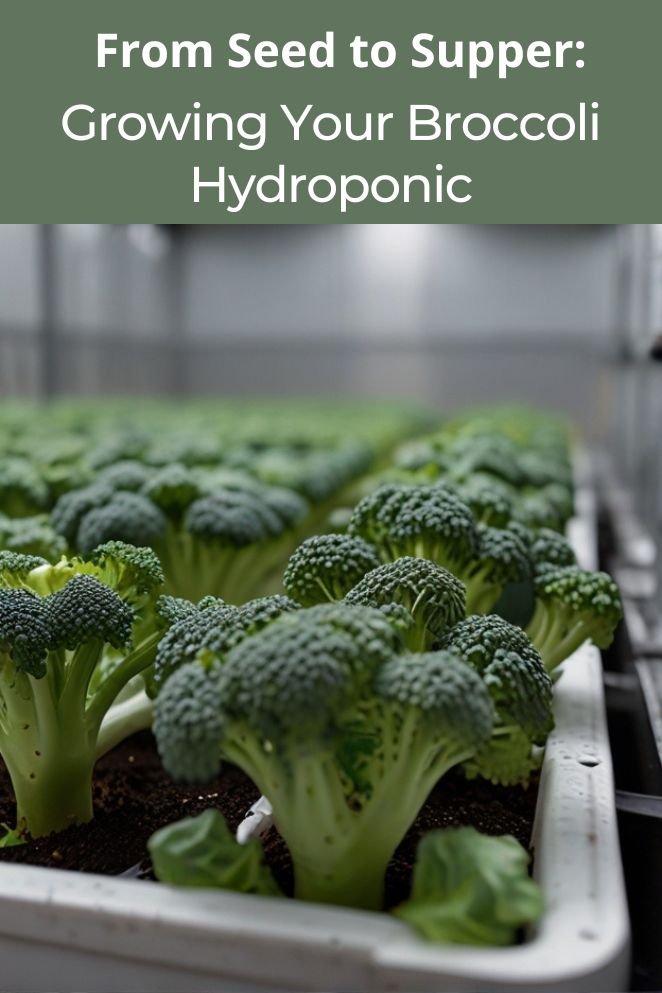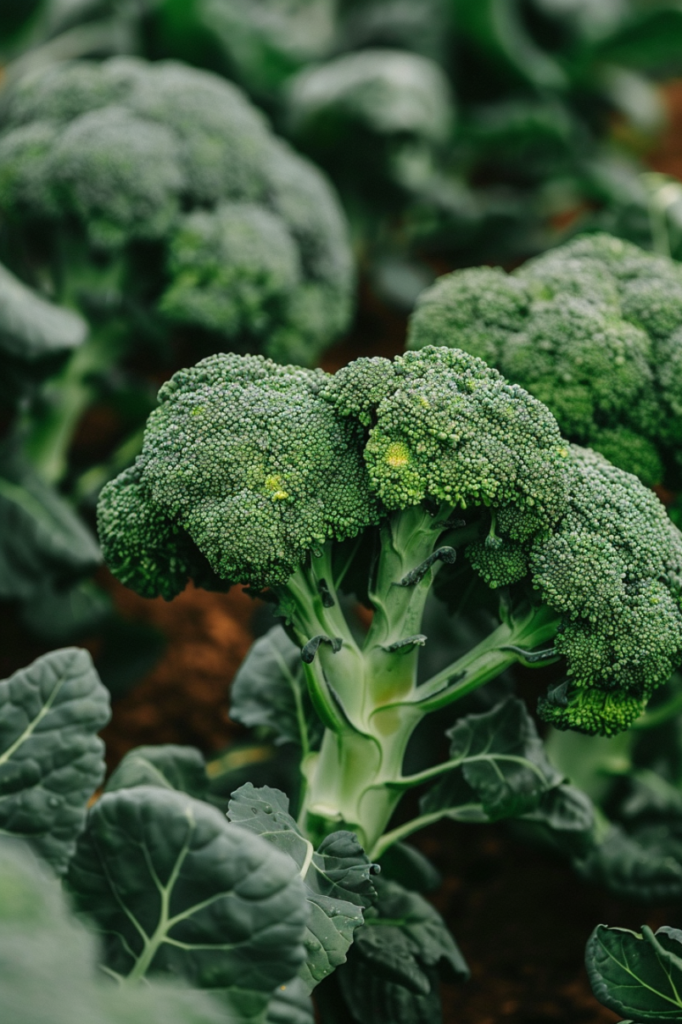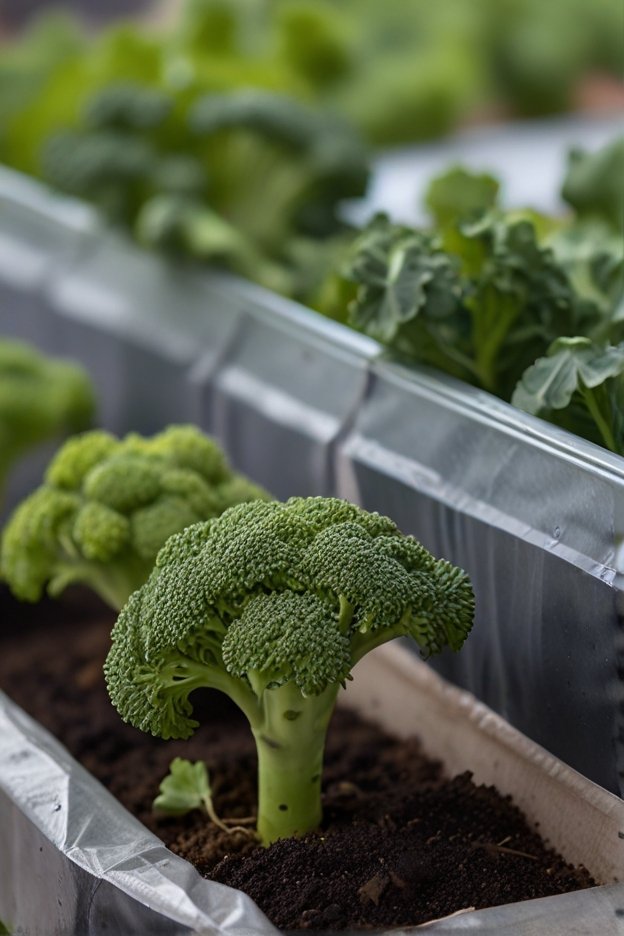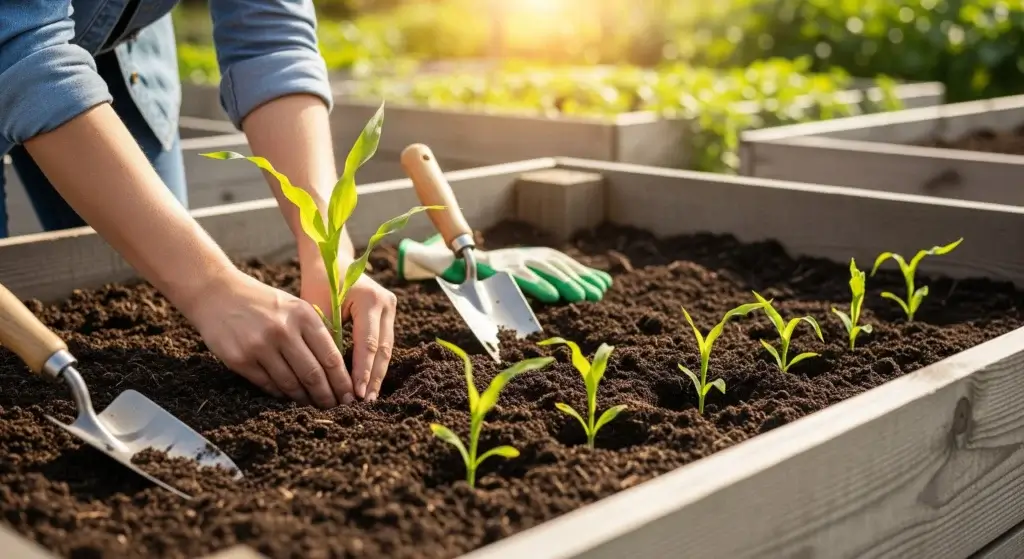
Broccoli is a nutritious and delicious vegetable that can be grown hydroponically, providing a convenient and efficient way to cultivate this crop indoors.
In this blog post, we’ll explore the benefits of growing broccoli hydroponically and provide a step-by-step guide on how to set up and care for your hydroponic system.
Benefits of Growing Broccoli Hydroponically
Benefits of Growing Broccoli Hydroponically
- Space efficiency: Hydroponic systems allow you to grow broccoli in a smaller space than traditional soil-based methods, making them ideal for those with limited space.
- Faster growth: Broccoli grown hydroponically has the potential to grow faster than when grown in soil, as the nutrients are directly available to the plant roots.
- Easy maintenance: Hydroponic systems require less maintenance than traditional gardening, as the nutrient delivery and ideal growing conditions are controlled.
- Year-round cultivation: Hydroponic systems can be used to grow broccoli indoors, allowing for year-round cultivation without the need to worry about extreme weather conditions.
- Consistent nutrient delivery: Hydroponic systems provide a consistent nutrient delivery to the broccoli plants, ensuring optimal growth and nutrient uptake.
- Pest and disease control: Hydroponic systems can help control pests and diseases, as the plants are grown in a controlled environment with minimal exposure to external factors.
- Nutrient-rich: Broccoli grown hydroponically can provide all the nutritional benefits of soil-grown broccoli, as the plants have access to a nutrient-rich solution directly from the roots.
- Longer shelf life: Hydroponically grown broccoli can remain fresh for a longer period of time compared to traditionally grown broccoli, as the nutrients are available directly to the plant roots as soon as they are needed.

What You’ll Need
Here’s a detailed list of what you’ll need to set up a hydroponic system for growing broccoli:
- Read also: Optimizing Spacing for Broccoli Plants
- Read also: Eggshells as Fertilizer for Broccoli
Hydroponic system
First, you’ll need to choose a hydroponic system that suits your preferences and space constraints.
Options include Deep Water Culture (DWC), Nutrient Film Technique (NFT), or others.
Each system has its advantages and drawbacks, so consider factors like ease of setup, maintenance requirements, and space availability when making your selection.
Seeds
Selecting the right broccoli varieties is crucial for successful hydroponic cultivation.
Look for varieties specifically recommended for hydroponic growing, such as ‘Packman’ or ‘De Cicco’.
These varieties are adapted to the unique conditions of soilless growing systems and are more likely to thrive.
Grow medium
Hydroponic grow mediums provide support for the plants’ roots and help maintain adequate moisture levels.
Common options include rockwool, perlite, or clay pebbles.
Choose a medium that provides good aeration and drainage to promote healthy root development and prevent waterlogging.
Nutrients
A hydroponic nutrient solution formulated specifically for broccoli is essential for providing the plant with the necessary elements for growth.
These solutions typically contain a balanced mix of essential nutrients, including nitrogen, phosphorus, potassium, and micronutrients.
Follow the manufacturer’s recommendations for mixing and application rates to ensure optimal plant nutrition.
Lights
Since broccoli requires ample light for healthy growth, investing in high-quality LED grow lights is essential for indoor hydroponic systems.
LED lights provide the full spectrum of light wavelengths necessary for photosynthesis, promoting robust plant growth and development.
pH meter & electrical conductivity (EC) meter
Monitoring the pH and electrical conductivity (EC) of the nutrient solution is crucial for maintaining optimal growing conditions and preventing nutrient imbalances.
Use a pH meter to measure the acidity or alkalinity of the solution and an EC meter to measure its nutrient concentration.
Optional Equipment
Depending on your setup and preferences, you may also want to consider additional equipment such as timers for controlling light cycles, trellis netting for supporting plant growth, and a reservoir bucket for holding and circulating the nutrient solution.
These optional items can help streamline the growing process and optimize plant performance.

Setting Up Your Hydroponic System
Here’s a step-by-step guide to setting up your hydroponic system and getting your broccoli plants off to a healthy start:
Assemble your hydroponic system
Follow the manufacturer’s instructions to assemble your chosen hydroponic system. Whether it’s a Deep Water Culture (DWC), Nutrient Film Technique (NFT), or another system, ensure all components are properly connected and in working order.
Prepare the grow medium
Prepare the grow medium by rinsing it thoroughly to remove any debris or dust.
If required, soak the medium in water to hydrate it before use.
Additionally, check the pH of the medium and adjust it if necessary to ensure it falls within the optimal range for plant growth.
Set up the lighting system
Install your lighting system above the hydroponic setup, ensuring proper light intensity and coverage for your broccoli plants.
LED grow lights are commonly used for indoor hydroponic systems and should be positioned at the appropriate height to provide adequate illumination.
Planting and germination
Sow broccoli seeds either in seedling trays filled with the prepared grow medium or directly into the hydroponic system.
Use a seed starter mix if planting in trays to provide optimal conditions for germination.
Maintain ideal germination conditions, including a temperature of around 70°F, humidity around 80%, and a light cycle of 16 hours per day.
Troubleshoot common germination problems
Monitor the germination process closely and be prepared to troubleshoot any issues that arise.
Common problems may include poor seed quality, inadequate watering, or improper environmental conditions.
Adjust watering frequency and ensure adequate ventilation to promote healthy seedling growth.

Broccoli Care
Here are essential care tips to ensure your broccoli plants thrive:
Maintain nutrient solution levels
Keep an eye on nutrient solution levels and electrical conductivity (EC) to support optimal plant growth.
Regularly replenish the solution to provide essential nutrients and maintain proper EC levels for healthy development.
Watering
Water your broccoli plants according to their stage of growth and environmental conditions.
Adjust watering frequency based on factors such as temperature, humidity, and plant size to prevent over or under-watering.
Monitor and adjust pH levels
Regularly check and adjust pH levels in the nutrient solution to ensure they remain within the optimal range for broccoli growth.
Maintaining proper pH levels is crucial for nutrient absorption and overall plant health.
Temperature and humidity control
Control temperature and humidity levels within the ideal range to create a favorable environment for broccoli growth.
Aim for temperatures between 60-75°F and humidity levels around 50-70% to promote healthy plant development.
Lighting schedule
As your broccoli plants mature, adjust the lighting schedule accordingly to provide adequate light exposure.
Maintain a consistent light cycle, gradually increasing or decreasing the duration as needed to support plant growth and development.
Install trellis netting
As broccoli plants grow taller, provide support by installing trellis netting.
This helps prevent bending or breaking of stems and ensures proper airflow around the plants, reducing the risk of disease and promoting overall plant health.

Troubleshooting Common Problems
When faced with common problems like nutrient deficiencies, pests, or diseases in your broccoli plants, take proactive steps to address them promptly and effectively.
Here’s how:
Nutrient deficiencies
Monitor your plants for signs of nutrient deficiencies, such as yellowing leaves or stunted growth.
Adjust nutrient levels in the solution as needed to ensure your plants receive the proper balance of essential nutrients.
Regularly replenish the nutrient solution to maintain optimal levels for healthy plant growth.
Pest control
Keep a close eye on your broccoli plants for signs of pests such as aphids, caterpillars, or mites.
Implement pest control methods such as using insecticidal soaps, neem oil, or introducing beneficial insects to manage pest populations effectively.
Regularly inspect your plants and take proactive measures to prevent pest infestations.
Disease management
Prevent and manage diseases by practicing proper sanitation and hygiene measures.
Ensure that your growing environment is clean and free from debris that can harbor disease-causing pathogens.
Remove any infected plant material promptly to prevent the spread of diseases.
Consider using fungicides or other disease control methods as necessary to protect your plants from common fungal diseases.
Harvesting Your Broccoli
Here’s how to harvest your broccoli effectively:
Determine ripeness
Harvest broccoli when the heads reach the desired size, tightness, and floret color.
Look for heads that are firm and compact with vibrant green florets.
Avoid waiting too long to harvest, as overripe broccoli can become tough and bitter.
Employ proper techniques
When harvesting, use sharp garden shears or a knife to cut the main stem of the broccoli just below the head.
Make clean cuts to avoid damaging the plant and promote regrowth for potential secondary heads.
Be careful not to injure nearby foliage or stems during the harvesting process.

- Read also: 5 Tips on Preventing Bolting in Broccoli Plants
- Read also: DIY Broccoli Row Covers: Protecting Your Garden with Solutions
Conclusion
Growing broccoli hydroponically provides several advantages, such as precise control over growing conditions, efficient use of space, and accelerated growth.
By following the steps outlined in this guide, you can effectively cultivate hydroponic broccoli and relish in the satisfaction of harvesting fresh, homegrown produce.



